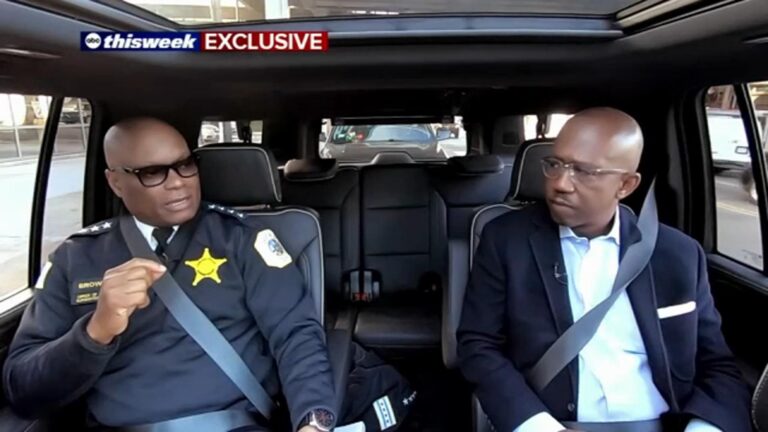Chicago’s Crime Challenge: Navigating Federal Support and Community Concerns
Residents’ Divergent Views on Federal Involvement in Crime Reduction
As Chicago faces a persistent rise in violent crime, many locals recognize the pressing need for enhanced resources to improve safety. Numerous community advocates and organizations have expressed cautious optimism about federal assistance aimed at strengthening law enforcement capabilities. They hope that such support could translate into increased police presence, advanced crime-solving technologies, and expanded services for victims of violence.
Despite this openness, a significant portion of the population remains wary of the proposed deployment of the National Guard, particularly under the current political leadership. Concerns focus on the potential consequences of introducing a militarized force into neighborhoods, fearing it may exacerbate tensions rather than alleviate them. Key apprehensions voiced by residents include:
- Favoring community-based policing approaches over military-style interventions
- Advocating for sustained funding in social welfare programs alongside policing efforts
- Worries about disruptions to daily life and infringement on civil liberties due to armed presence
- Demanding obvious dialog and clearly defined roles if federal forces are involved
| Support for Federal Crime Resources | Resistance to National Guard Deployment |
|---|---|
| Approximately 70% of residents endorse increased federal aid | About 65% oppose National Guard patrols in neighborhoods |
| Strong advocacy for upgrading policing technology | Concerns over potential civil rights violations |
| Calls for enhanced victim assistance programs | Preference for local governance of law enforcement strategies |
Local Leaders Champion Community-Driven Crime Solutions
Prominent community figures throughout Chicago emphasize that lasting crime reduction hinges on locally tailored strategies rather than federal military involvement. They argue that Chicago’s complex social fabric demands solutions rooted in trust and collaboration between residents and law enforcement, warning that outside forces could undermine these relationships.
Ongoing investments in initiatives such as youth mentorship, community policing, and economic development are highlighted as essential components in addressing violence. Advocates propose reallocating resources to:
- Broaden neighborhood engagement and outreach programs
- Strengthen mental health services accessible to vulnerable populations
- Increase funding for education and workforce development opportunities
| Community Initiative | Anticipated Benefit |
|---|---|
| Community Policing | Fosters trust and lowers crime rates |
| Youth Mentorship Programs | Reduces gang recruitment and delinquency |
| Job Training and Employment Support | Enhances economic stability and possibility |
Apprehensions Surrounding Armed Forces’ Role in Neighborhood Safety
While many Chicagoans welcome efforts to curb crime, there is widespread unease about the prospect of National Guard deployment within city neighborhoods. Residents fear that a militarized presence could heighten tensions and disrupt community dynamics, perhaps damaging the fragile trust between law enforcement and citizens.
Community advocates and activists have outlined several critical concerns:
- Potential for Increased Violence: Military personnel may lack the specialized training needed for de-escalating community conflicts.
- Impact on Youth Wellbeing: The presence of armed forces could induce fear and anxiety among children and teenagers.
- Threats to Civil Liberties: There is apprehension about possible overreach and restrictions on freedoms during National Guard operations.
- Need for Root Cause Solutions: Critics emphasize that investments in education, employment, and mental health are more effective long-term crime deterrents.
| Issue | Community Concern |
|---|---|
| Militarization of Neighborhoods | Fear of escalating community tensions |
| Police-Community Relations | Risk of further eroding public trust |
| Children’s Mental Health | Potential rise in anxiety and trauma |
| Effectiveness of Armed Intervention | Preference for social and economic programs |
Strategic Recommendations: Balancing Law Enforcement and Social Investments
Community advocates and policymakers alike stress the necessity of a complete approach to public safety that combines enhanced policing resources with robust social services. They argue that equipping law enforcement with modern tools and additional personnel must be complemented by expanded mental health support, youth engagement, and poverty reduction programs. This integrated strategy aims to tackle the underlying causes of crime, promoting long-term stability and community resilience.
Recommended actions include:
- Scaling up crisis intervention teams to manage nonviolent incidents effectively
- Increasing community policing initiatives to strengthen relationships and cooperation
- Expanding access to social services for vulnerable groups
- Enhancing educational and vocational training programs targeting youth
| Investment Area | Objective | Projected Annual Funding |
|---|---|---|
| Police Equipment and Training | Improve officer preparedness and safety | $50 million |
| Mental Health Services | Provide crisis intervention and counseling | $30 million |
| Youth Engagement Programs | Deliver preventative education and job skills | $20 million |
| Community Outreach Efforts | Build trust and collaborative safety networks | $15 million |
Charting a Path Forward for Chicago’s Safety
As Chicago confronts escalating crime challenges,the community remains divided over the optimal strategy to restore safety. While many residents support increased federal assistance to strengthen law enforcement, there is significant opposition to the National Guard’s presence on city streets, particularly under the Trump administration’s proposal. This ongoing debate reflects the delicate balance between implementing effective crime-fighting measures and maintaining community trust. Moving ahead, incorporating the perspectives of local residents will be crucial in crafting policies that reduce violence without deepening social divides.





